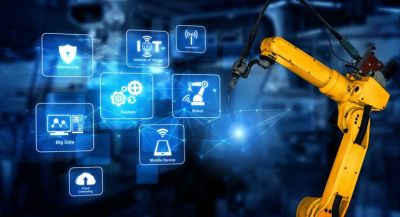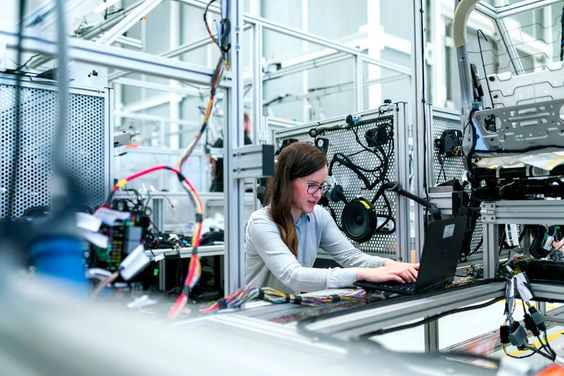There is no denying that technology improvements have had a revolutionary impact on enterprises. The Internet of Things (IoT), which outlines how devices utilize the internet to interact, and artificial intelligence (AI) software, which assembles huge quantities of data for intelligent machine learning, are the two most important advancements affecting manufacturing.
Both of these developments have enhanced production methods and efficiency, and they have been warmly accepted in the industry.
As this trend continues, it is worth considering how these technologies are fundamentally altering the industrial business as we know it.
Roles Centered on Technology Entice the Next Wave of Talent.

Generation Z enters the workforce with very different expectations, experiences, and demands than previous generations. Born in the digital era, they easily adapt to new innovations and choose jobs that allow them to use the most recent of those technologies.
For the first time in centuries, the manufacturing sector and industry 4.0 have considerable advantages and appeal to young workers. With augmented reality (AR), mixed reality (MR), and the industrial internet of things (IIoT), workplaces are becoming the epicenters of cutting-edge technological progress. Manufacturing, when combined with modern training techniques that mix technology and practical learning, is poised to attract a new technological era of natives.
Technological advancements like IoT and AI are revolutionizing maintenance planning in manufacturing, enhancing operational efficiency and minimizing downtime through proactive maintenance strategies.
The factory is getting more than just a technological update with IIoT; it is also getting a human upgrade. AR or MR, 3D work instructions, and contextualized data are ready to convert the industrial workforce into dynamic, tech-savvy workers that actively study and respond to data from around the facility.
Analytics and Contextualized Data

Real-time performance data analytics has revolutionized every position in the industry as information technology (IT) and operational technology (OT) combine. Whether on a headpiece or a tablet, giving important data points at the right time, in the right location, and with the right context is critical to determining which areas of production to repair – and how.
Industrial employees will become data-centric as every equipment is linked to the factory network. With the correct data at their fingertips, manufacturing employees may shift away from reactive maintenance plans that might require costly line shutdowns and toward proactive programs that treat minor faults before they cause larger harm.
Workers get a better, more complete picture of factory operations, are better equipped to manage their time, and gain crucial data-centric problem-solving skills when data streams are personalized and contextualized for each function.
Smart Products

Consumers today expect intelligent, adaptive, and connected goods, sometimes known as “smart.” These items include terms like “smart lighting,” “connected autos,” and “wearable technology.” Consumers use this sort of technology to measure a range of elements of their everyday life, such as what they eat and how much exercise they get.
As items grow smarter, producers must not only be ready to produce this technology but also keep up with the product’s technical progress as it is constantly enhanced. This fundamentally alters the industrial business model and the needed skill set of employees. Products are no longer mass-produced things; they require specialized expertise to be manufactured on a wide scale.
What Is the State of the Workforce?

These technological breakthroughs, as wonderful as they are, have a significant influence on the manufacturing workforce. Approximately 80% of manufacturers report a moderate to severe scarcity of eligible applicants for specialized or highly skilled employment. This skills gap is predicted to leave up to 2 million industrial positions unfilled over the next decade.
For instance, 3-D printing is getting more affordable, and it takes less time and material to create a complicated design. These goods will not require an assembly line, but rather a professional engineer to develop and build forms that cannot be produced in a factory. It’s simple to see how manufacturing is transitioning from a blue-collar to a highly skilled white-collar career.
Today’s manufacturing workforce is not only particularly proficient but also well compensated, earning around 24% more per year than the typical U.S. worker. Technology is assisting in making these vocations more profitable than they were previously.
The Internet of Things and Big Data’s Impact

CMMS technology also remotely links equipment, allowing them to “speak” to one another. It links factories to the Web, enabling remote monitoring and automation. It is also known as the Internet of Things (IoT). Rather than requiring a human inspection, the Internet of Things allows systems to be linked together and basically monitor each other’s processes. This is a common technique employed by most manufacturers including brass fittings manufacturers.
Conclusion
Companies must invest in technology, use data analytics, and embrace new solutions like 3-D printing and smart devices. Those that do so will have a competitive advantage over the others, while others will be left behind.